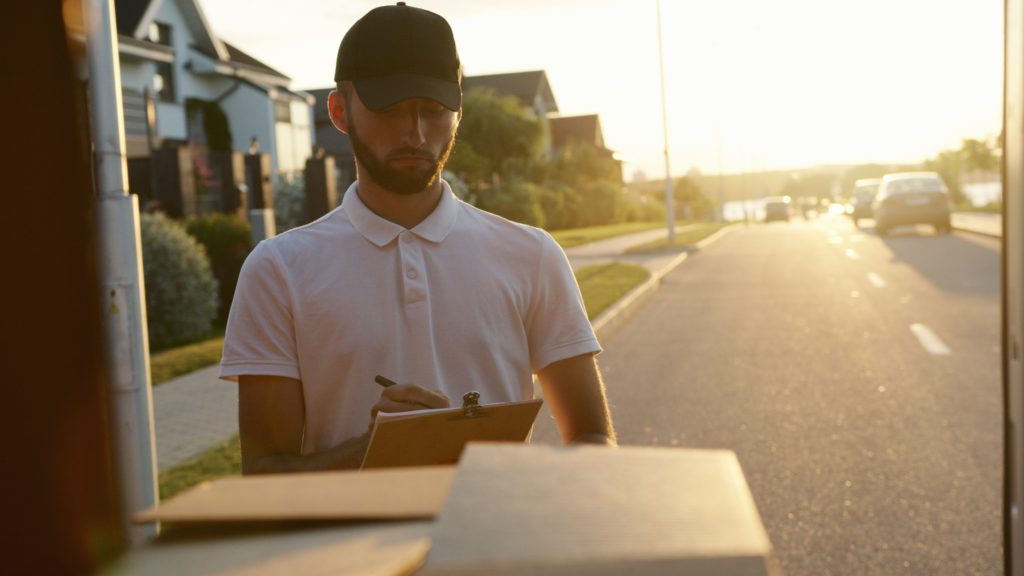Our society has become used to the convenience that comes along with online commerce. Almost anything that you want to buy is available to you through a user-friendly website — it’s even likely that you’ll be offered similar items and accessories that enhance the item’s use before you even get to the checkout. Not to mention that you’re often able to get the item the next — if not the same — day.
The reason that we’re able to take advantage of all of this convenience is the swift and fascinating rise of our digital landscape. Technology is almost constantly updating and evolving to offer solutions to the challenges of our everyday lives. Yet people aren’t always fully clued in on the interesting processes and tools that underpin the ability for your online orders to get from the warehouse to your hands.
So, let’s take a moment to look at some of the digital equipment that is currently making a difference in supply, logistics, and shipping.
The Internet of Things
The internet of things (IoT) represents the ecosystem of digital objects that communicate with one another in ways that can make your life easier. In domestic settings, this most often comes in the form of smart home devices — sensors throughout your home sending data to security systems, temperature control platforms, and even from your refrigerator to order new perishable groceries you’re running low. Similar technology is also making an impact in eCommerce to improve processes, and ensure your items get to you on time and intact.
Largely, this is affected by the introduction of radio-frequency identification (RFID) tags and other sensors to individual items in the warehouse. When you order an item from a store, scanners throughout each step of the warehouse, packing, shipping, and delivery process read the tag or sensor, and collect data about the journey the item has been on. This is one of the reasons that you are usually able to get such detailed and accurate information about precisely where your item is on the way to your door.
This isn’t just useful from an efficiency perspective, either. These sensors also provide accurate information about the conditions that your ordered item has been subjected to. Food and drink items can be monitored for temperature readings throughout the journey, and temperature control in wine cellars, warehouses, and refrigerated trucks adjusted accordingly. On one hand, this helps to ensure the high quality and safe status of the item that you’ve ordered. On the other, it also gives providers and manufacturers accurate data as to what elements of their processes are negatively affecting your products, so that they can make nuanced adjustments to improve your experience in the future.
Route and Fleet Management
One of the advantages of our ultra-connected world is that we have greater access to products from outside of our immediate geographical area than ever before. Our items can ship from across the country — if not the world — often in a matter of days and arrive safely and efficiently into our hands. Whether this is the work of a single courier or collaboration between multiple third parties, one of the reasons that your delivery can get to your home with maximum efficiency is due to the rise in hardware and software used by logistics managers.
Route mapping used to be undertaken manually by managers, looking up current information about the status of roads and planning out a route that prioritizes the order of the most important or efficient delivery stops accordingly. Today, route mapping software increases the efficiency of deliveries by utilizing driver input, global positioning system (GPS) trackers, and local news to not just plan a journey out in advance, but also make real-time adjustments when road, weather, or traffic conditions change. Most platforms can send alterations, or alerts about accidents on the road ahead, directly to drivers’ vehicles, so that they can keep on schedule or change their routes to make priority deliveries.
This route mapping platform is usually also complemented by artificial intelligence (AI) driven fleet management software. Telematics has been a mainstay in shipping technology for some time, but over the years the types and accuracy of the information that vehicle-mounted sensors collect have increased. To the extent that now AI fleet management systems can receive and analyze real-time data on mileage each vehicle has undertaken, the condition of the vehicle, idling time, and the quality of driver behavior, among others. The software then uses this information, coupled with insights it has gained from historical data, to make recommendations to fleet managers about what vehicles are in the best condition to tackle long distances. They can also provide information on what aspects of driving and delivery drivers can improve on to make safer, more efficient deliveries.
The Last Mile
The technological enhancement doesn’t end once the item you’ve ordered has left the warehouse and is making its journey toward your home. Some of the most exciting innovations of our contemporary tech landscape are starting to be used in performing that last-mile connection to your home.
For the most part, the technology being used here isn’t strictly for the fast or efficient delivery of your products to your door. Rather, it’s about leveraging game-changing vehicle tools to ensure that your shopping doesn’t cause an unnecessarily large burden upon the environment. Over the last few years, courier services have taken to adopting hybrid fuel options for their final mile, but in 202,1 UPS, Waymo, and Amazon will be rolling out their fully electric vehicles. While these will begin in select cities, the lowering cost of battery-powered vehicles is likely to see this expand in the near future.
Looking a little further ahead, there are also plans in place for automated last-mile deliveries to become accessible for consumers. Amazon Prime Air — the service which sees drones deliver packages — has already received Federal Aviation Administration (FAA) approval and is expected to begin testing on customer deliveries soon.
Conclusion
It’s no secret that a lot goes on behind the scenes between your eCommerce order and its final delivery. However, there is near-constant development and exploration of technology that can help make the shipping process safer and more efficient. The more accessible advanced hardware and software becomes, the more sales and shipping businesses can develop new processes that get their items into your hands swiftly.




Comments are closed.